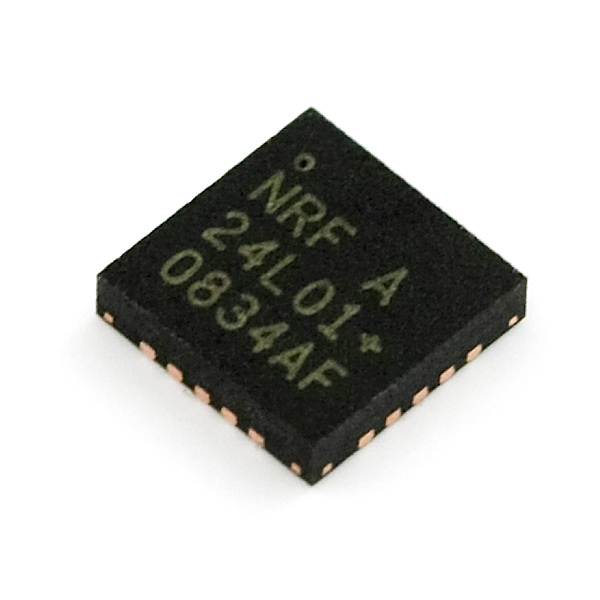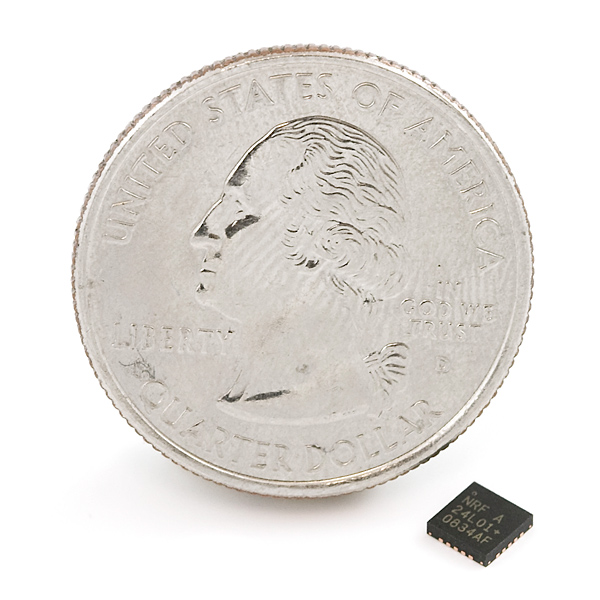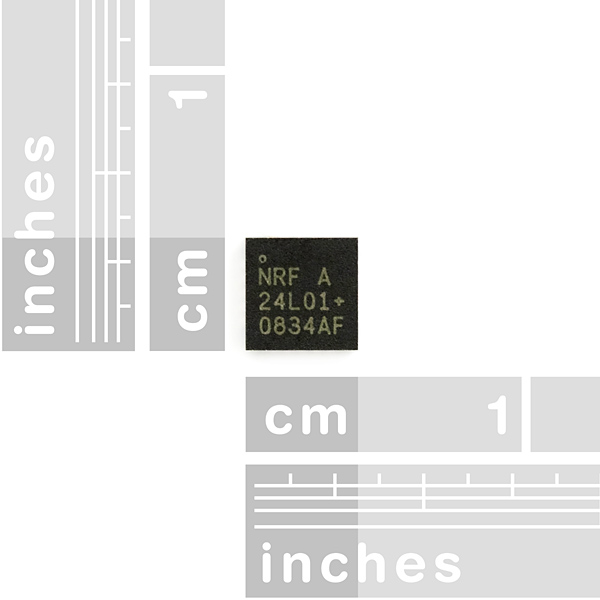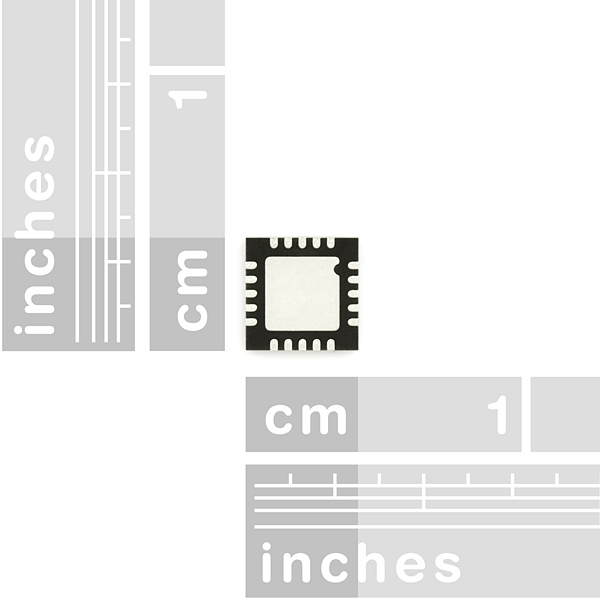Nordic Semiconductor nRF24L01+. Transceiver chip operating in the 2.4GHz band. Take all the coolness of the nRF2401A and add some extra pipelines, buffers, and an auto-retransmit feature - very nice! The improved '+' version of the nRF24L01 includes more features and better range!
- Drop in compatible with nRF24L01
- 1.9V-3.6V supply
- 2Mbit data rate
- New long range 250kbit option
- Auto acknowledge
- Auto re-transmit
- Multiceiver - 6 data pipes
- 32 byte separate TX and RX FIFOs
- 5V tolerant input pins
- Software selectable channel from 2400MHz to 2525MHz (125 Selectable channels)
- Minimum number of external components
- Lots of application notes and support on Nordic Semiconductor Website
- Works well with the 16MHz SMD Crystal
2.4GHz Transceiver IC - nRF24L01+ Product Help and Resources
Core Skill: Soldering
This skill defines how difficult the soldering is on a particular product. It might be a couple simple solder joints, or require special reflow tools.
Skill Level: Competent - You will encounter surface mount components and basic SMD soldering techniques are required.
See all skill levels
Core Skill: Programming
If a board needs code or communicates somehow, you're going to need to know how to program or interface with it. The programming skill is all about communication and code.
Skill Level: Competent - The toolchain for programming is a bit more complex and will examples may not be explicitly provided for you. You will be required to have a fundamental knowledge of programming and be required to provide your own code. You may need to modify existing libraries or code to work with your specific hardware. Sensor and hardware interfaces will be SPI or I2C.
See all skill levels
Core Skill: Electrical Prototyping
If it requires power, you need to know how much, what all the pins do, and how to hook it up. You may need to reference datasheets, schematics, and know the ins and outs of electronics.
Skill Level: Competent - You will be required to reference a datasheet or schematic to know how to use a component. Your knowledge of a datasheet will only require basic features like power requirements, pinouts, or communications type. Also, you may need a power supply that?s greater than 12V or more than 1A worth of current.
See all skill levels
Comments
Looking for answers to technical questions?
We welcome your comments and suggestions below. However, if you are looking for solutions to technical questions please see our Technical Assistance page.
Customer Reviews
No reviews yet.





Can anyone post the actual part #'s they used to build the nRF24 circuit? I have the values from the reference design, but I want to make sure I get correct the components within spec.
Has anyone tested this new low-data rate mode? How much more range does it buy you?
Just wondering: if I integrate this into a product, does my product then have to be FCC certified?
Edit: I see your key fob, and it does not seem to require any FCC approval, so I believe I answered my own question. However, if someone could confirm this?
SF just posted an FCC FAQ, it's pretty awesome. I think it'll probably answer your specific questions.
Yup, just saw that, thanks.
so... what do I need to use this? does it come with some base? can I hand solder this? what componets do I need to get to use it? crystal? anybody has a circuit diagram?
Page 65 of the datasheet.
Nice chip our beta prototype of wireless flash trigger
http://m.flickr.com/photo.gne?id=4688567914&s=50430439&sig=748115bc69333f7827f0a982d2d34e03&time=1277354583
Hand soldered!!!!!!!!!!!!!!!
Casillas@ifrdesign.com
Has anyone transmitted packets with more than 8 bytes? I go to 9+, and no more comm... I don't own any sweet RF equipment to debug, and my o-scope has trouble triggering on the ShockBurst packets (to at least see the envelope)..
Ok. The Sparkfun demo code works "out-of-the-box", but it does not scale that way... If using the code, be sure to modify
void tx_send_payload(char cmd)
to something like
void tx_send_payload(char cmd,char count)
Do its RX friend, too.
Other than that, if you can get over the task of soldering this little dude, awesome chip!